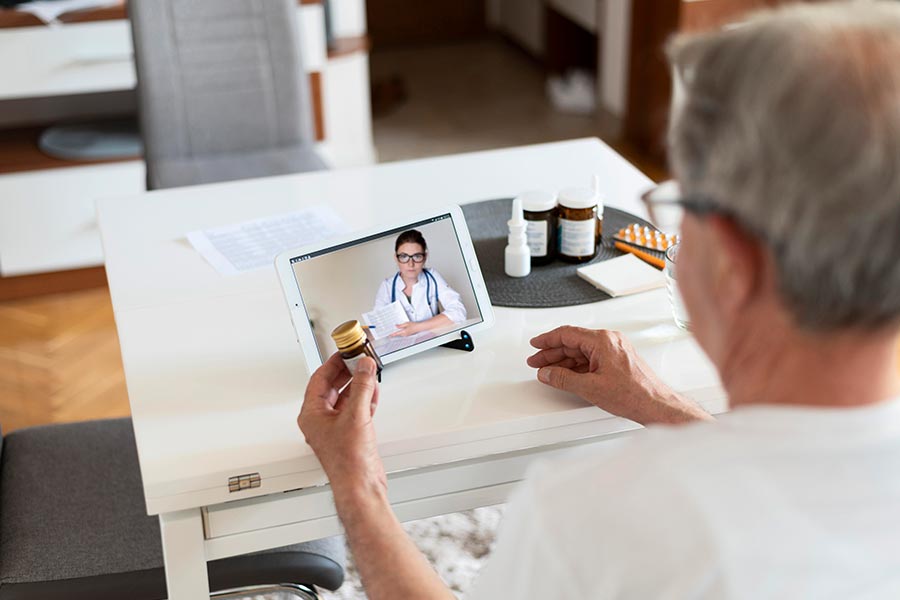Digital Medicine – Good or Bad, What are the Problems

Digital medicine is a package of completely new ways to help patients. Thanks to the introduction of IT technologies, healthcare professionals will be able to provide assistance to patients more quickly, in a comfortable mode and work with large amounts of data.
In this article, we will look at the most attractive digital developments for the medical field that were presented in 2022 for potential investors. We will pay attention to new technologies using intelligent computer systems, Big Data and telemetry, which are already being used in many clinics today to combat COVID-19. It is impossible to bypass the most popular area in healthcare in terms of investment attractiveness – telemedicine, which has been conquering the market at a record speed over the past two years.
Characteristic Features of Digital Medicine
Computer equipment in combination with telecommunication means allows solving a number of important tasks in healthcare remotely:
- Monitoring the patient’s condition, delayed consultations and maintaining an electronic medical record;
- Purchase of medicines in online pharmacies using an electronic prescription;
- Holding consultations and consultations of doctors of regional hospitals with leading specialists.
Telemedicine equipment can be used to equip ambulance teams, and this will significantly increase their efficiency. It should be noted that the introduction of communication tools in healthcare would be impossible without improving the legislative framework.
Telecommunication means become the basis for a digital educational platform, which is used for interaction between students and teachers, and advanced training of doctors. They are used both to obtain and to control knowledge. They provide access to sections of specialized literature in electronic libraries, provide an opportunity to conduct lectures and seminars remotely, broadcast surgical operations. One of the important areas of telemedicine is work with the population aimed at improving health literacy.
Another area of health care related to education is making informed clinical decisions during diagnosis and treatment. Telehealth communication services can be actively used in evidence-based medicine to access databases and scientific publications. Both researchers and practitioners will be able to exchange information.
Google, HP and Philips are Developing Standards for Digital Medicine
The Consumer Technology Association (CTA) has taken the initiative to develop standards for digital medicine. In August 2020, Google, Phillips and HP joined the project, three large companies operating in the field of modern medical technologies. The CTA initiative is to define a common terminology that will be used by clinicians, software developers and hardware manufacturers. Experts note that the lack of such standards currently delays the development of digital startups, the possibilities of which are almost limitless.
The need for such work becomes more acute for two reasons:
- Development of regulatory requirements by government organizations;
- Implementation of cost-reimbursement programs by pharmaceutical companies.
Experts believe that the lack of standards will turn the term “digital medicine” into a marketing line. In their opinion, it is necessary to distinguish between the general medical sphere and the sphere of surgical intervention.
In addition to Google, Phillips and HP, other companies have joined the initiative.
Covid-19 Pandemic and Digitalization of Medical Services
One of the reasons for the growth in demand for information digital technologies in the field of healthcare was the COVID-19 pandemic. They have become the center of attention of doctors and patients. Many of the latter are deprived of full face-to-face consultations with doctors under quarantine conditions.
Thus, the digital service last year launched a new COVID-19 information service for doctors, MTS offered clinics and centers to use its mobile application to provide remote assistance to patients with cardiovascular diseases, and MMT, the leading developer of projects in the field of online counseling, announced the development of a methodology for providing psychiatric care to children using telecommunications.
Not all startups, despite their attractiveness, will be monetized due to imperfect legislation. Excessive regulation of all spheres of the economy in India is a generally recognized problem. So, in the three years after the law on telemedicine came into force in January 2018, only two business projects have achieved success.
However, the hope for easing of legislation in the field of digital medical technologies remains. Amid pandemic-related restrictions, they will become a must-have interface between doctor and patient, and most players will have to implement them in the coming years.
Conclusion
The COVID-19 pandemic has shown that medical technology is a promising market. Many experts and doctors hope that the revision of some laws related to healthcare will provide an influx of money into this area in the form of state grants and investments, and the use of MHI funds will make digital medicine widely available this year.
